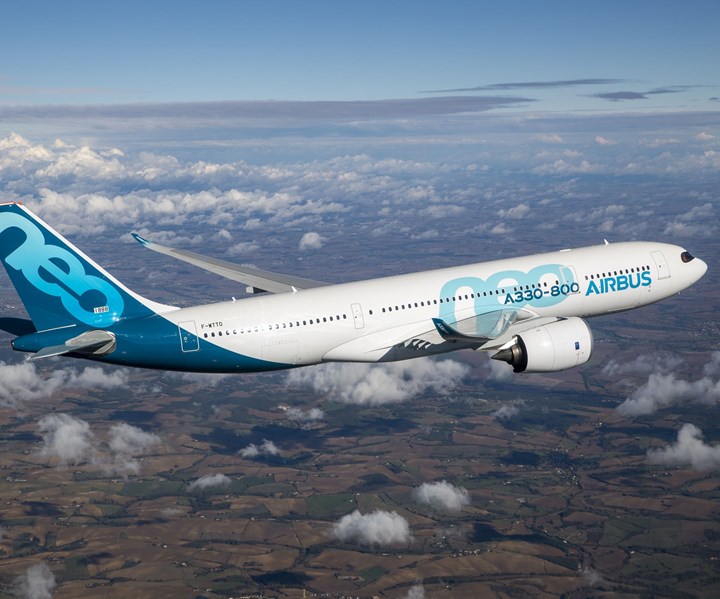Airbus A330-800 receives joint EASA and FAA Type Certification
The widebody aircraft, part of the A330neo family, incorporates composite materials, a 3D-optimized wing and other advances for 25% reduced fuel consumption.

Source | Airbus
Airbus (Toulouse, France) reports that the A330-800 widebody aircraft has received joint Type Certification from the European Aviation Safety Agency (EASA) and the Federal Aviation Administration (FAA). The aircraft’s certification flight-test campaign was successfully performed by aircraft MSN1888, which completed the program in 370 flight test hours and 132 flights since its first flight in November 2018.
The A330-800, part of the new-generation A330neo family, is reported by Airbus to be the most efficient, longest-range, entry-level widebody. The aircraft incorporates new Rolls-Royce (Derby, U.K.) Trent 7000 engines, a new 3D-optimized wing and new Sharklets using lightweight composite materials. These advances are said to enable a 25% reduction in fuel consumption compared with older generation competitor aircraft of similar size.
Certified initially with a maximum take-off weight (MTOW) of 242 metric tonnes for a range capability of up to 7,500 nautical miles, the A330-800 will typically seat 220 to 260 passengers in three classes, or up to 406 travelers in a single-class high-density configuration.
To date, the A330neo family has won 337 firm orders from 22 operators, Airbus says. The A330 family operates more than one million flights every year with 1,400 aircraft currently in operation. The A330neo is the latest addition to the leading Airbus widebody family, which also includes the A350 XWB.
Related Content
-
Low-cost, efficient CFRP anisogrid lattice structures
CIRA uses patented parallel winding, dry fiber, silicone tooling and resin infusion to cut labor for lightweight, heavily loaded space applications.
-
First Airbus A350 crash confirmed in Haneda
Shortly after touch-down, a JAL A350-900 aircraft recently collided with a De Havilland Canada Dash 8. Exact circumstances are still unknown.
-
Combining multifunctional thermoplastic composites, additive manufacturing for next-gen airframe structures
The DOMMINIO project combines AFP with 3D printed gyroid cores, embedded SHM sensors and smart materials for induction-driven disassembly of parts at end of life.
.jpg;width=70;height=70;mode=crop)





